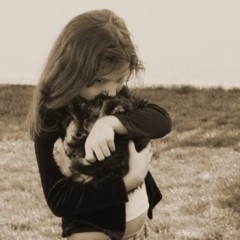Coping with Seasonal Affective Disorder (SAD)
- Sue Ann Rybak

- Dec 21, 2021
- 3 min read
Winter officially began at 10:59 a.m. on December 21, 2021. Winter Solstice marks the start of winter and the shortest day of the year. It was also the day I dragged my light therapy box out of the basement.
The Winter Solstice was a reminder. A reminder to pause and breathe deeply and be aware of my emotions.
For the last couple of weeks, I have been hibernating. I stopped going to yoga because I was tired and anxious. I justified not exercising by telling myself I was too busy and needed to save the money, but slowly I was sinking into the abyss of depression. Depression is a lot like quick sand. The more you struggle the quicker you sink.
It’s best to pause and breathe.
Every year I suffer from Seasonal Affective Disorder (SAD) or the “winter blues,” and I am not alone. Roughly 5 percent of Americans suffer from SAD with the majority being women.
According to the National Institute of Mental Health, SAD is a type of depression that usually begins in the late fall and goes away during the spring and summer. (However, it’s important to note that some people get SAD in the summer versus the winter.)
Symptoms of Seasonal Affective Disorder (SAD) may include:
Feeling depressed
Having difficulty concentrating
Change in appetite such as overeating (craving carbohydrates)
Social withdrawal (feel like hibernating)
Losing interest in activities you once enjoyed
Having problems with sleep (hypersomnia)
SAD sometimes makes me feel like I am two different people. During the summer, I love spending time outside in the sun soaking up those ultraviolet rays. However, I just want to throw the covers over my head during the winter and eat chocolate chip cookies.
Instead of getting up early to go for a run or to the gym, I stay in bed. I tell myself it’s self-care because my body needs to sleep, but ironically it has the reverse effect. I wake up still feeling tired and anxious and unable to focus— three common symptoms of SAD.
Through the years, I have discovered that exercise is vital to my well-being. While I used to love getting up before dawn and running with my headphones on when I was in my 20s, I can think of a million reasons not to go running before dawn with headphones on living in the City of Philadelphia.
Thankfully, this year I have an added nudge to get me out of bed–Bean, our Beagle-mix rescue dog. So every day, come rain or come shine, I get out of bed at 6:30 a.m. and put my sneakers on. Then, Bean and I walk or jog for half a hour.
Sometimes, Bean drags me, and other times I drag him.
However, I always feel better after our brisk morning walks. Studies have show that exercise can help alleviate the symptoms of SAD.
A few years ago, someone gifted me their old light therapy box. The first time I used it I was shocked at how bright it was. After using it a few times, I started to feel a little bit better. In addition to exercise and light therapy. I do weekly therapy and take lots of Vitamin D. I even have a prescription. This year will be especially hard because I lost my best friend Todd Hemperly to COVID-19. Despite being born with severe birth defects, he never let anything stop him. His mantra was anything is possible with God.
Instead of feeling sorry for himself, he choose to be happy and viewed obstacles as a challenge to overcome. Before Todd died, he became an motivational speaker because everywhere he looked he “saw people who felt depressed due to the flaws they saw in themselves.” I used to view my epilepsy, which is completely controlled by medication and exercise, and depression as a curse. Now, I view them as obstacles God gave me to overcome to become a stronger, wiser and more compassionate human being. Todd said, “I am here to speak to the world about how to cope with depression…I want to share with people around the world how they can be happy with themselves, but most of all, I am alive to open your eyes and see that anything is possible.” View a video of Todd here. I used to think talking about mental illness and my complex-partial seizures would have a negative impact on my career, but I now accept them as part of who I am.
I am a writer, runner, and a mental health advocate.
It’s just one of the many lessons, I learned from Todd. Thanks to the support I receive from Still I Run and my family and friends, I know I am not alone in my struggles. We all struggle, but help is available. Todd taught me it’s okay to ask for help. Everyone will experience dark days in their life. It’s inevitable, but even the darkest night can be extinguished by the smallest light. For more information about SAD, go to the National Institute of Health’s website.
